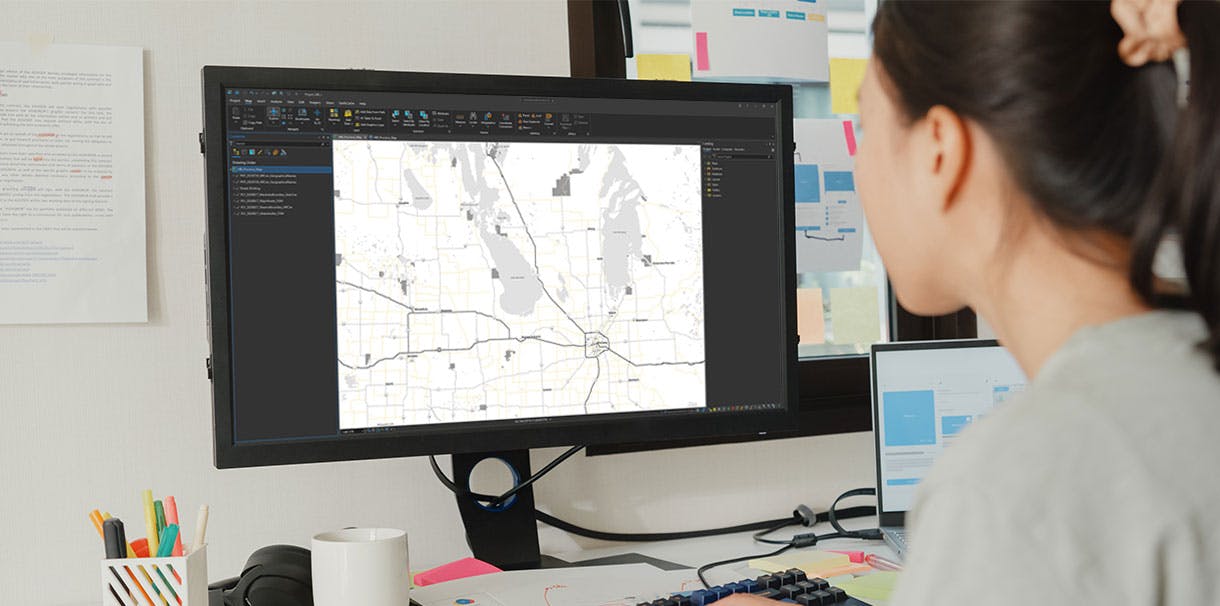Interest in the geoscience field among girls has grown over the past 10 years, yet women graduating with Geographic Information Systems (GIS) majors remain underrepresented in higher-level GIS technical roles. For instance, in 2014, women held about 22% of executive roles and 24% of developer positions in GIS.
Finding trends that will supplement the discovery over time is difficult. Still, a general overview within academia of the broader realization of postsecondary education in Canada indicates an increase in women with degrees earned in humanities where in comparison they remain underrepresented in the science, technology, engineering, and mathematics (STEM) fields.
How do we encourage women and girls to pursue studies and careers in the GIS technological field?
- 1
Black Girls MAPP – This group connects and empowers women of colour in GIS. (MAPP: Mapping with Action to Pioneer Progress.)
- 2
National Girls Collaborative Project (NGCP) – NGCP brings together organizations committed to informing and encouraging girls in STEM—including GIS.
- 3
Women in GIS – This network offers resources and support to foster a welcoming community for women in the GIS profession.
In addition, many local and global non-profit organizations rely on volunteers to capture valuable information.
GIS technology is totally dependent on information known as data. When relative to a place (geographical location), data is referred to as spatial data. The combination of relating data and place is GIS. Various software and online platforms process data, utilizing analysis tools and production methods. Combined, the results provide decision-making information.
GIS is all around you.
It assists and provides results to a range of disciplines, from identifying and mapping geographic elements; visualizing environmental, climate and weather change patterns; providing online platforms for stories highlighting population, health and economic variance; monitoring global and regional disasters; providing interactive information for planning and development; tracking species at risk, and we can go on and on.
As long as data exists, GIS will remain a vital part of providing solutions.

How can we encourage women and girls to pursue a career in GIS?
GIS professionals can promote the field by engaging with students directly. Here are some actionable ideas:
- 1
Visit schools: Partner with teachers to organize engaging GIS activities.
- 2
Support lab work: Assist students with hands-on projects to introduce them to industry methodologies.
- 3
Host sessions: Organize sessions where students can, for example, contribute data to the OSM (OpenStreetMap) community.
- 4
Celebrate GIS Day: Plan a GIS Day event for local classes.
- 5
Engage local groups: Encourage new graduates and professionals to join regional GIS groups—extra points for fun branded swag!
Make GIS inclusive.
Research shows that if students are not interested in a topic, it is less likely that they will want to continue that learning path. It is worth noting that the GIS Community has several active online groups. Find one on LinkedIn or any of the other social media platforms for your geographical area. If not, there is notably a GIS Community for each area of learning in GIS.
A career in GIS can vary widely, from fieldwork to data management, to cartography, to analysis, to web map design or web map application development. You may be required to do parts of each or all of the above. This diversity makes the field dynamic and rewarding in pursuing careers in geoscience, especially when you witness your work being used or displayed as part of a solution or as mapping results to assist in community development.
There are many ways to make an impact with a GIS career. You may choose to become a GIS Technician, GIS Analyst, GIS Developer, GIS Manager, or choose a GIS focused role within the planning, environmental, geotechnical or hydrology fields. These are a few of the many choices available to become a part of the GIS Community.
There are countless avenues within STEM for growth and innovation—and GIS is a powerful one. By exploring careers in GIS, women and girls can help decrease the gender gap and drive change in the geoscience field. Together, we can build a future where every woman and girl has the opportunity to thrive in STEM.




